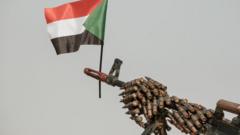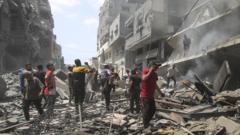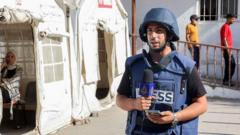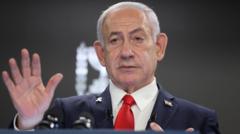Following U.S. strikes on Iranian nuclear facilities, Iran's leadership held critical discussions, ultimately deciding on a limited retaliatory response aimed to project strength while minimizing escalation risks.
Navigating the Turbulence: Iran's Calculated Response to Recent Strikes

Navigating the Turbulence: Iran's Calculated Response to Recent Strikes
Amid escalating tensions, Iran opts for a measured retaliatory strike to maintain regional stability and avoid full-scale war with the U.S.
As the crisis between Iran and the United States continues to simmer, a closer look at Tehran’s strategic deliberations reveals a careful balancing act. On the morning of June 23, 2025, in the wake of U.S. bombings targeting three of its key nuclear sites, Iran’s Supreme National Security Council convened urgently to plot its course of action. The previous week had seen severe escalations as Israel successfully executed operations impacting Iranian military command and critical infrastructure.
Despite the provocation, Iranian authorities were acutely aware of the dangers posed by a full-scale conflict with the U.S. Reports indicate that Iran’s Supreme Leader, Ayatollah Ali Khamenei, was keenly focused on both demonstrating military resolve and averting a catastrophic escalation that could ensue from an all-out war.
Behind closed doors, Iranian officials—who spoke on the condition of anonymity—revealed that orders were dispatched to ensure any strikes remained limited in scope. The Revolutionary Guards selected the Al Udeid Air Base in Qatar as their target. This strategic decision was influenced by dual factors: its status as the largest American military base in the Middle East and its location within a country that maintains friendly relations with Iran. The objective was to coordinate a response that showcased Iran’s capability without invoking further American retaliation.
The narrative crafted around this tactical strike seemed deliberately designed to resonate with both domestic and international audiences. While Iran’s media celebrated the attack, maintaining that no American lives were lost, analysts speculated that this measured response could pave the way for a cease-fire negotiation, allowing all parties involved to strike their own victory narratives amidst mounting pressures.
As the geopolitical landscape evolves, the question remains: Can Iran, Israel, and the U.S. coexist with narratives of triumph while teetering on the brink of conflict? The intricacies of this situation continue to unfold, warranting close observation.




















